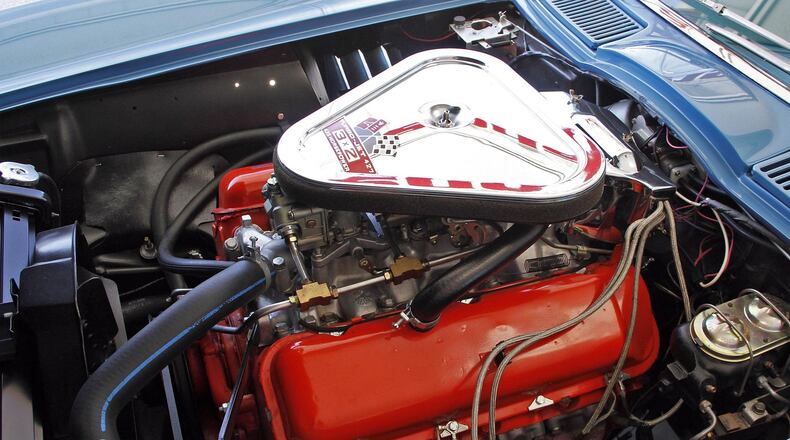My mechanic says not to worry and that the rings just need to seat. I would like to hear your thoughts. Should I be concerned? -- Edward
RAY: Yes. But not as concerned as your mechanic should be.
If you were burning a quart of oil every 750 miles, I might be inclined to believe that the rings still might seat correctly. But you’re burning oil at five times that rate, Edward.
So your rings are going to have to do more than seat. They’re going to have sit on a golden throne.
By the way, “seating” means that the piston rings that go up and down inside the cylinders “conform” to the exact shape of their cylinder walls. When rings are properly seated and perfectly matched up with their cylinder walls, very little oil gets by them and burns up.
Conversely, rings that don’t seat properly, or are worn out, let lots of oil past them and result in you burning lots of oil and getting calls from local officials who want to use your vehicle for mosquito control.
Unfortunately, I fear that your rebuild was done inadequately. Your mechanic is, understandably, doing everything he can to avoid having to redo it. It’s time-consuming and expensive. But I think that’s where you’re heading.
You might as well humor him for now, Edward. Tell him you’ll drive it for another 500 miles and see what happens. But if the oil burning doesn’t drop precipitously by then, he’s going to have to go back in and try again.
When you rebuild an engine, you usually have two choices. You can either just hone (rough up) the insides of the cylinder walls and replace the rings. Or you can bore out (increase the size of) the cylinders and then put in new, oversized pistons with new rings. That’s probably what he should have done, even though it costs more.
Whatever went wrong, burning a quart of oil every 150 miles after a rebuild is totally unacceptable. If I had an engine rebuilt, and it burned more than a quart every 1,000 miles, I’d be ticked.
So, tell him you’ll drive the car a little longer and see if the rings seat. But during that time, set up a webcam outside his shop. And if you see moving trucks pull up, rush over there and get your money back before he relocates to Saskatchewan.
Clicking, pinging or zhinging can help diagnose starting issue
Dear Car Talk:
I have a 2006 Ford Fusion that is working well, except for a periodic starting issue. Every now and then, when I turn the key, I hear a metallic “ping” without the usual slow cranking sound I associate with a dying battery.
When I get the ping, the engine doesn’t crank or start. If I turn the key to the off position, and then try to start it again, it will fire up without a problem.
I’ve had a mechanic spend a couple of hours trying to duplicate the problem, and he could not. Any ideas? - Charles
RAY: That’s all that’s wrong with it after 15 years? Are you sure?
If you’re lucky, Charles, what you’ve got is a bad starter. Normally, a starter that’s failing will make a clicking sound. That’s obviously not what you’re hearing.
But if the starter’s pinion drive - a small gear that pops out of the starter to mesh with the larger flywheel - is sticking and not popping out all the way, you can get a quick, metallic “brrrrring” or “zzzhhhiiing” sound. If you’re lucky, that’s the “ping” you’re hearing. The reason I say “if you’re lucky” is because the alternative is a lot more expensive.
If you’re not lucky, there’s a worn or broken tooth on your flywheel. And replacing a flywheel is a big, expensive job. If your flywheel is damaged, some of the time, when that pinion gear pops out of the starter, it’ll try to mesh with a missing or worn-down flywheel tooth. And failing to engage with a gear, it’ll spin and make that metallic “zhhhiiiiiing” sound.
Here’s what I’d suggest: Have your mechanic remove your starter. Once the starter is off, he’ll be able to see part of the flywheel. He can then manually turn the flywheel 360 degrees and look for a bad tooth.
If he’s smart, he’ll mark the flywheel with a piece of chalk before he starts to turn it. If he’s not smart, and he’s still turning the flywheel a couple of hours later, you can tap him on the shoulder and suggest the chalk idea. If he doesn’t see any flywheel damage, that’s great. Then, have him put in a new starter and, chances are, your problem is solved.
If he does see one or more bad teeth, tell him to put in a new starter anyway. Since you’ve already paid for the labor to remove the starter, it’d be silly to put a 15-year-old starter back on there.
And then keep driving it. I wouldn’t recommend replacing the flywheel at this point. Since this problem occurs rarely, and the car always starts on the next try, it doesn’t sound like you’re in imminent danger of being stranded.
It’ll likely get worse over time, but it may deteriorate very slowly. You could be fine for a couple of years.
And, if no other major parts of the car fail first, it gets to the point where you do get stranded someday, call AAA, get the car started and then drive right to your mechanic. Or the trade-in lot. Good luck, Charles.
Got a question about cars? Write to Ray in care of King Features, 628 Virginia Drive, Orlando, FL 32803, or email by visiting the Car Talk website at www.cartalk.com.

